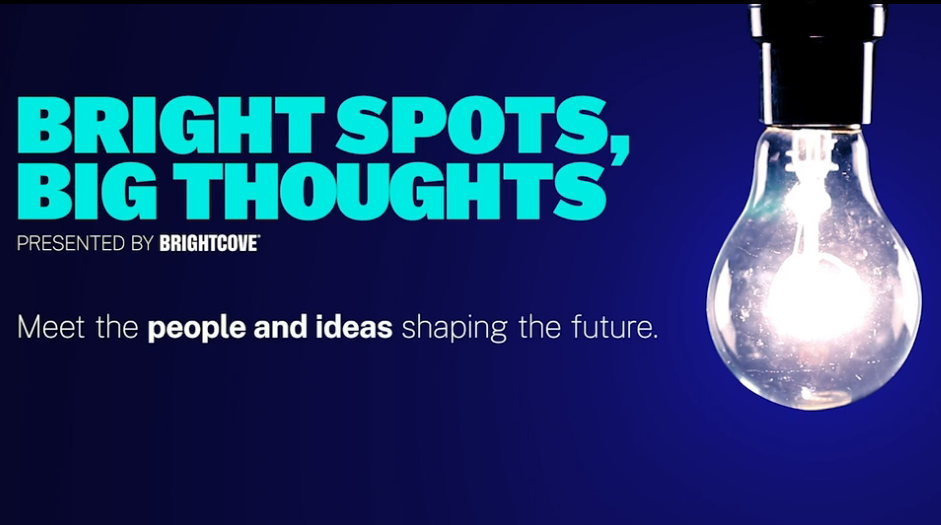It’s no secret that 2020 was a year full of challenges. But, for people who knew where to look, it also brought with it opportunities. Our virtual panel discussion, Bright Spots, Big Thoughts, brought together a handful of those amazing people:
- Ben Rabner, Head of Experiential Marketing at Adobe
- Natacha McLeod, Senior Director of Marketing at the Atlanta Symphony Orchestra
- Elise Swopes, Photographer and Visual Storyteller
The conversation unintentionally, but unsurprisingly, shifted to focus almost exclusively on virtual events – how to have great ones, the unexpected opportunities they offer, and why they’re here to stay.
Here’s what they had to say – and how you can put it to use as you’re thinking about your own virtual offering.
TO MAKE A VIRTUAL EVENT GREAT, CONNECTION (HUMAN AND INTERNET) IS KEY
Yes, video allows you to stream your virtual event. But it also allows you to go deeper with storytelling.
Our panelists saw the biggest success when they used video to:
- Facilitate the types of spontaneous meetings and side conversations that happen at in-person events through breakout rooms.
- Offer exclusive and behind-the-scenes content – in-depth interviews to get to know speakers and up-close-and-personal footage of performances to make attendees feel like they’re more fully immersed in the experience.
- Make the experience interactive by giving attendees the opportunity to ask questions of the speakers through a live Q&A or chat with fellow attendees throughout sessions.
To continue the experience of your event beyond the virtual, you can experiment with non-video ways to create moments of connection with your attendees. Some ideas that our panelists shared:
- Use snail mail to send thoughtful packages to attendees ahead of the event that’ll bring your experience off the screen and into their home. Include things like inspiring books, treats or recipes, notebooks, or a small art project to reset during breaks.
- Share music playlists to set the vibe.
- Send along printed pre-reading or follow up reading materials on topics attendees might want to go deeper on.
WHEN IT COMES TO YOUR VIDEO STRATEGY, START SMALL AND BUILD FROM THERE
For some of our panelists, video was only a very small part of their strategy before 2020. They knew successfully utilizing video would be crucial moving forward – but felt overwhelmed by the opportunity.
Their advice? Start with simple video projects you can accomplish quickly and easily. Over time, as you gain confidence, expand your video offering.
- Start with short videos you can share on social media to build engagement.
- Expand to longer-form video-on-demand content – interviews, behind-the-scenes footage, or storytelling around your product offering.
- For your first virtual event, start with something pre-recorded or “simu-live.”
- When you’re ready to go live, experiment with an hour-long panel discussion or two before committing to a full-day event.
DON’T MISS THE CHANCE TO EXPAND YOUR AUDIENCE GLOBALLY
When you host an in-person event, there’s no denying the obstacles to scaling – location, venue size, travel limitations, schedules, and so much more…
When our panelists first pivoted their in-person offerings for virtual, their primary goal was to retain their current customer base. With their successful switch to virtual, the Atlanta Symphony Orchestra retained 99% of their subscriber base – a huge success. They never considered they’d be pulling in new attendees too, until they dug into their analytics and saw that people were tuning in from other states and even other countries. So they evolved their strategy to expand that growth and reach beyond their immediate region with their world-class music offering. The result? They’ve seen subscriber growth in just a few months.
What started as a happy accident turned into a shift in strategy.
The lesson? Pay close attention to your audience’s viewing habits — in a virtual world, you have more access to analytics than ever before — and use that information to evolve your strategy for growth.
“Hybrid” is a word you’re going to be hearing a lot in 2021 as the world continues to shift. The question is no longer, “Is virtual here to stay?” The answer to that is a resounding, “Yes!” The question instead is, “How will we integrate virtual and in-person experiences in a way that is intentional and engaging?”
In the words of Ben Raber, “video is where the future is.”




